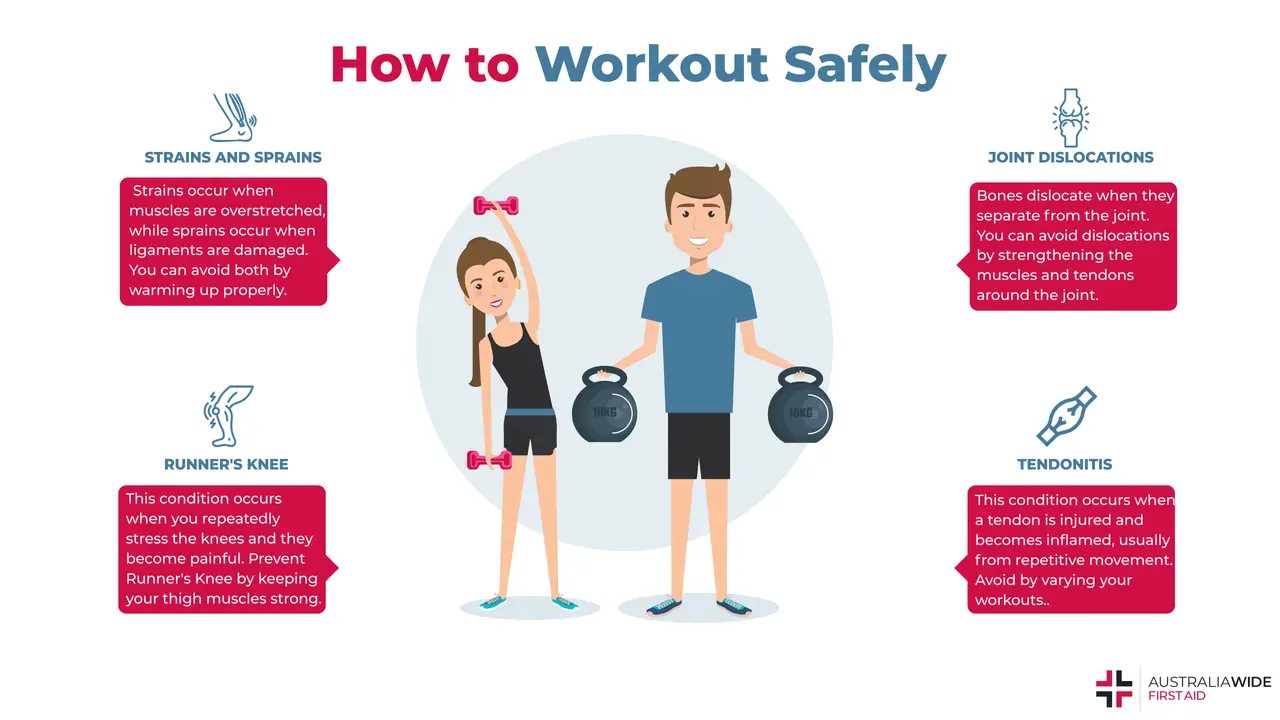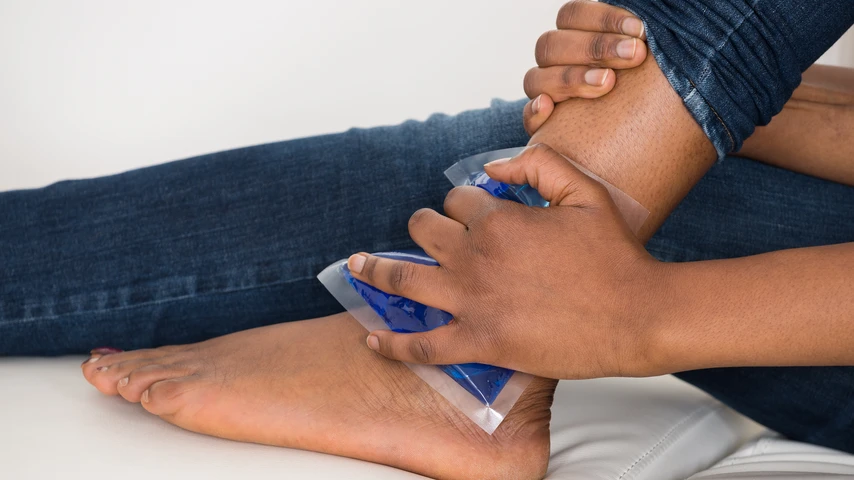Common Workout Injuries and How to Prevent Them


Exercise injury occurs when physical harm or damage is done to one or multiple parts of your body, for example, when you twist your foot when jumping, thus damaging your ankle, or put too much weight on the barbell and pull a muscle in your lower back. The injury can be caused by a single event during exercise (fall), or sustained over a longer period (wear and tear of a tendon tissue).
Exercising is important for our overall well-being because it keeps us mentally and physically healthy. Many of us like challenging ourselves to see what we are capable of (it feels good, too!). However, it's important to be wary of injuries, as they can lead to ongoing complications. This 14-year-long study on injuries sustained in fitness facilities found that the main cause of injuries is due to overexertion (both in the free weights area and group exercise classes).
Today we look at common workout injuries, what exercises or activities cause them, and how to prevent them and workout safely.

We often use those two terms interchangeably but they don’t have the same meaning. A strain occurs when the muscle is overstretched or torn and the tendon is affected (tendon attaches bone to muscle). We should call it muscle pull.
Strains can happen in any muscle however they most commonly occur in:
Exercises performed too fast, with too much load, or with incorrect technique can lead to strain. The best way to avoid strains is to do a thorough warm-up before your exercise session, learn the correct technique, and always listen to your body.
A sprain occurs when the ligament (connecting tissue between joints) is damaged or torn and is frequent in:
Just like with strains, there is no one type of exercise that causes it, and the best way to prevent them is to warm up properly and not to exercise when tired.
More information about strains, sprains, and other soft tissue injuries can be found in our Resource Library.
A stress fracture may happen if you push through the pain of a strain or sprain and the bone becomes vulnerable to damage. You are at a higher risk if you play contact sports or do high-impact training (for example, bodyweight HIIT classes or heavy lifting),
Bone fractures most commonly occur in:
To prevent stress fractures, wear protective gear when you play contact sports, use proper footwear and consider focusing on strength training in the gym to make your muscles stronger. Also, get enough vitamin D and calcium in your diet - these two nutrients are important for bone health.
A dislocation occurs when two bones get separated where they meet at a joint. It could happen when you collide with someone and fall on your arm heavily when you play sports, or when you exercise in the gym with too much weight and incorrect technique.
For example, incorrectly performed barbell shoulder press sometimes leads to dislocated shoulder when the top of your arm slips out of your shoulder joint and it can move in any direction.
You can dislocate almost any joint:
If you want to prevent dislocations, take care to avoid falls, use protective gear when you play contact sports, and keep exercising regularly to make your muscles and tendons around the joint strong. It is also important to maintain a healthy weight to not put extra pressure on the bones.
Once a joint is dislocated, physical therapy can help prevent dislocations in the future.
Plantar fasciitis and shin splints are not the same conditions but they are both injuries of those who walk and/or run a lot.
Plantar fasciitis is inflammation of the muscle on the bottom of the foot. This happens as a result of overuse (remember the time when you had to walk all day and the bottoms of your feet were sore afterwards?).
Plantar fasciitis can be prevented by stretching your feet and arches before running and by investing in high-quality shoes.
You know you have shin splints when you feel pain just above the ankle along the bone in the front of your leg and this pain stops when you stop walking or slow down. Shin splints are not a chronic condition - you will stop getting them when the stress is over.
Some of the ways to prevent shin splints are:

Runner’s knee is dull pain around the front of the knee and is called a Patellofemoral Pain Syndrome. Even though the name suggests that it is a runners’ injury, it is not just that. Anyone who does activities that repeatedly stress the knees can get Runner’s Knee symptoms.
For example, cycling, playing football, or skiing. Exercises like lunges or jumping can cause that, too.
To prevent Runner’s Knee:
Tendonitis is a swelling and inflammation of a tendon after it is injured. The most common injury causes are overuse and repetitive movement and the main symptoms are joint pain and stiffness.
Tendonitis can occur in any of the tendons but the most common sites are:
You don’t have to play tennis or golf or be a swimmer to have the above-mentioned conditions. Quite often, it occurs as a result of doing the same exercises for months and even years and not switching up the routine.
The best way to avoid tendonitis is to vary your workouts but if you already have tendonitis - take a break from exercises that cause pain. For example, it may be better to avoid push-ups and pull-ups when experiencing Tennis elbow pain.
Most injuries can be prevented by simply following the guidelines and rules on how to protect yourself when you play sports, do bodyweight exercises or train with weights in the gym.
Some of the best ways to minimise the risk of any injury are to:
However, it is not always possible to avoid injury therefore it is crucial to know how to deal with injuries as and when they happen. To find out how to prevent, identify, and manage exercise injuries from deteriorating further, head to one of our First Aid Courses.
Need that piece of paper to give to your employer or put on your resume to show that you actually do care about workplace safety and manual handling, and that you have the skills and knowledge to keep everyone safe? Our fully-online Manual Handling course gives you just that. From your desk or the comfort of your own home, gain the knowledge and skills you need to make sure everyone in your workplace gets home safely at the end of each day.

October 1, 2024
Almost every job involves using the body to carry out some type of manual task. Some tasks may be hazardous, causing injuries such as musculoskeletal disorders (MSDs). Knowing how to manage them is a legal responsibility of all workplaces.

January 10, 2024
In Australia, workplace safety is a top priority, and First Aid plays a crucial role in ensuring the well-being of employees. Workplaces are expected to adhere to specific regulations and guidelines outlined by Safe Work Australia. How does your workplace stack up?

November 24, 2023
No matter how experienced you are as an outdoor activity leader, there are some things you should always do to keep your group safe. Nature can be unpredictable, and so it’s best to be prepared.